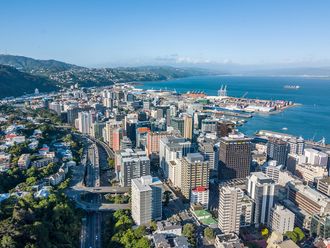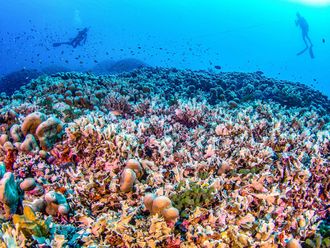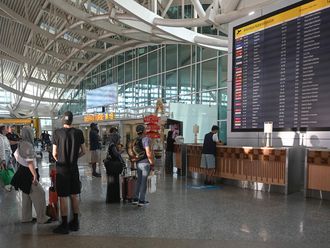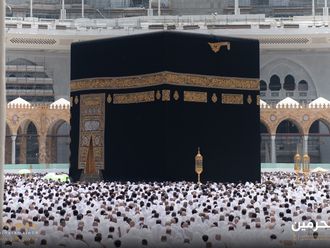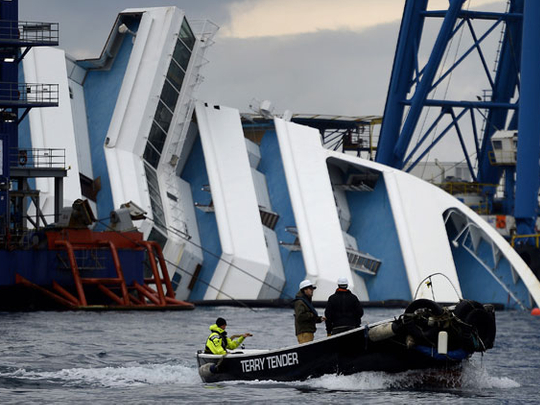
Giglio Islands: As Giglio marks the first anniversary of the Costa Concordia disaster Sunday, locals haunted by the memories of that night say they want rid of the ghostly shipwreck which has scarred the island and their lives.
“The thing that really stayed with me was the children’s eyes,” said Mario Pellegrini, a hotel owner and deputy mayor on the Tuscan island of 1,500 residents, who played a key role in the rescue that night.
“They were crying but they weren’t screaming because they were so scared,” Pellegrini said in an interview by a lighthouse in the port as he looked out at the ship where he spent a dramatic six hours.
While Pellegrini was on board, the giant ship twice the size of the Titanic keeled over on its side, trapping him and dozens of others around him in a corridor where the walls suddenly became the floor.
“It was like a film. There were screams. Everyone was trying to save their own skin. There was no guidance. People were just in shock.”
Eventually rescue workers from the outside managed to lower a step ladder and shivering passengers and crew emerged onto the side of the ship, climbing down the hull on a rope ladder to coast guard boats.
But Pellegrini quickly realised there were more people trapped inside.
“When we opened the doors we heard screaming from what had become wells. There were people there! I found a rope and we dragged them up. The water was rising, they were exhausted, drenched to their necks.
“The last one - an Indian waiter - had the fear of death in him.”
Shivering and in a state of shock, many survivors upon finally reaching land made their way to a church where they were given food and clothes by an island community that rallied as best it could.
“It was like a giant encampment,” remembers Father Lorenzo Pasquotti, a jovial parish priest who gave survivors vestments to keep them warm.
“There was this multi-ethnic presence in the church. That’s my strongest memory. They were tired, tested. They couldn’t understand where they were.”
Pasquotti has kept objects that survivors left behind - life jackets, emergency blankets, even discarded rolls of bread - and wants to put them in a shrine in the church as a memory of that fateful night.
Like many local inhabitants, however, Pasquotti also yearns for the sense of quiet normality that was shattered by a tragedy that claimed 32 lives.
“As soon as they refloat that ship and take it away, we will all breathe a huge sigh of relief. We want our island back!” he said.
The giant cruise ship still lies on its side in front of the port, as welders in harnesses patch holes in the rusting white hulk and divers work around the clock to lay cement sacks to prevent the wreck from breaking in two.
An operation to refloat the ship - the biggest of its kind ever attempted - has been held up by a series of technical difficulties like the challenge of drilling into the granite seabed to install a platform to stabilise the hull.
With a floating construction site around the Costa Concordia and hundreds of international salvage workers on the island, the removal may not happen as soon as some locals hope.



